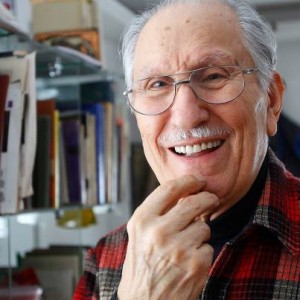 When Jafar Shoja was a child growing up in Iran, there was no TV, radio or other forms of todayís entertainment. Instead, Shoja spent his time using pencil and paper to trace the patterns of his familyís Persian rug.
When Jafar Shoja was a child growing up in Iran, there was no TV, radio or other forms of todayís entertainment. Instead, Shoja spent his time using pencil and paper to trace the patterns of his familyís Persian rug.When he went to school, he would go in early to draw a picture on the chalkboard for his fellow students, erasing it all before his teacher arrived.
ďI donít remember a time when I wasnít doing art,Ē Shoja said. ďI entertained myself. It was like toys to me.Ē
When it was time for high school, he attended a special school for budding artists. And while his father was at first disappointed that he wasnít studying something that would earn him more money, that disappointment soon changed to pride after Shoja held his first major art exhibit.
ďMy work kind of exploded,Ē Shoja said.
The exhibit was attended by Iranian leaders, including members of the Shah of Iranís family, and Shojaís work was soon featured on the cover of national publications. By the time he was in his 20s, he was invited to the United States to study.
Today, Shoja lives a much quieter life than one might expect for an artist so well-known in his own time: working out of a small studio in Nashua, where he has lived for more than 40 years.
And this month, Shojaís work is on display at the Rivier University art gallery, showcasing the many phases of his art career, from traditional Persian miniatures and paintings full of symbolism to iron sculptures and clay ďdysfunctional teapots.Ē
But while Shoja enjoys more fame than many other people in the region, it doesnít seem to affect him. In fact, Shoja believes that art is in everything, and in everyone.
ďI always told my students that they can do anything,Ē he said.
Shoja began painting Persian miniatures when he was growing up in Iran. The traditional Middle Eastern paintings are done with a brush so fine that its tip is nearly invisible. The paintings themselves, which often depict scenes of royalty or religious symbolism, are also small, fitting on a sheet of paper or canvas the size of a small book.
Many of Shojaís miniatures were on display at the Rivier gallery last month. He said while his style was in keeping with the traditional works, he often used more modern symbols, including imagery from Michelangelo paintings.
After coming to the United States in 1958, Shojaís art took on many new forms, changing from year to year depending on what was going on in the world around him.
After his son was born in 1979, Shojaís paintings grew darker, and became a way to express the fears that many parents feel. It is these paintings that will be the focus of the current Rivier display.
The paintings, huge compared to his Persian miniatures, feature dark, saturated colors and use symbolism to express his concerns.
In one, Shoja depicts individuals with guns and other weapons, attacking each other while blindfolded. The painting represents a line from the Bible, Shoja said, in which Jesus, while being crucified, says, ďFather, forgive them, for they know not what they do.Ē It represents Shojaís philosophy on creating a more peaceful world.
ďI just feel, if we could see each other as fellow human beings, we wouldnít kill and hurt each other,Ē he said.
Many of the paintings feature imagery of nuclear weapons, pollution and violence, combined with many depictions of mothers, fathers and children. Shoja said the pieces, painted at the height of the Cold War, represent his own fears for his sonís future.
The paintings are impressive in size and in skill, but Shoja is quick to deflect any praise.
ďThese are fears that effect everybody; I just painted them as my form of expression,Ē he said. ďWhen you have the skill, you can do anything.Ē
Over the years, Shojaís skills have brought him to experiment with metals, clay and even abstract paintings. Some of his most popular work, in terms of sales, have been his so-called ďdysfunctional teapots,Ē ornate sculptures that resemble the kitchenware.
And while last monthís Rivier exhibit featured only a few of the sculptures, his home studio is filled with hundreds, Shoja said.
Today, Shoja is continuing to change up his style and has begun taking classes to paint on the computer. Heís still learning but said he loves the challenge.
ďItís amazing,Ē he said. ďItís absolutely incredible. I am so excited to get to learn.Ē
And Shoja said he hopes his art and ever-changing style can show visitors to the exhibit that anyone can be an artist and learn a new medium, if they put their mind to it.
ďPeople think that artists have greater imaginations, but thatís not true,Ē he said. ďEverybody has it. You have it, you have it, you have it. Thereís so much you can do that you canít even imagine. You just have to create it.Ē
Shojaís new exhibit at Rivier University opens Jan. 22. His art will be on display until Feb. 27.
By The†Nashua Telegraph
The Iran Project is not responsible for the content of quoted articles.











